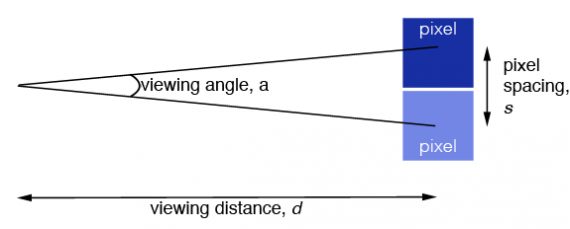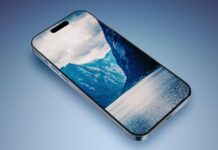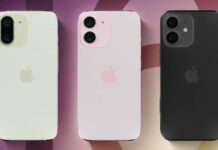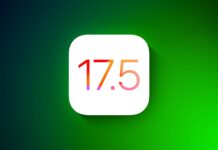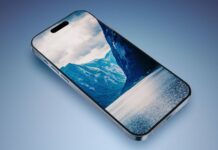The new iPad 3 tablet will come with a Retina Display that will have a probable resolution of 2048 x 1536 pixels, but many argue that this screen would not really be "retina" because it does not have the 326 pixels that Apple claims the human eye has he cannot distinguish them. Although Apple did not lie then, the reality is that the Retina Display is defined not only by the number of pixels per inch of the screen, but also by the distance from which we look at the screen. If you look at the image above, you will notice that a 50" TV with 44 ppi can be called Retina if we look at it from a distance of 72 inches. The same can be said about a 17-inch MacBook pro if we look at it from a distance of 26 inches.
So what does it mean to say that a screen's individual pixels are indistinguishable? The launch of the iPhone 4 and the first Retina display was, of course, accompanied by a jump in the screen resolution from 480×320 to 960×640 — from 163 pixels-per-inch (ppi) to 326 ppi. This in turn leads many people to label some arbitrary resolution as "Retina display" — typically 326 ppi itself, or 300 ppi. The latter number is a common rule-of-thumb baseline in the print industry for "photo resolution".
An iPhone 4 Retina Display can no longer be called Retina if we hold the screen less than 11 inches from our eyes and everything boils down to distance. The current iPad tablet has 132 ppi when held at a normal distance of 16 inches from the eye, but the iPad 3 will have double the number of pixels per inch at the same distance and will be considered to have a Retina screen. Of course, the iPad 3 will come with a screen that will have double the number of pixels, but this is not the only important factor because the distance from the human eye always matters. A smaller distance from the eyes destroys the concept of "retina" and a larger distance strengthens it, so iPad 3 will have Retina Display even if the number of pixels per inch is not greater than 326.
Secondly, it repeats my previous conclusion that a pixel-doubled iPad running at 2048×1536 is easily enough definition to count as a Retina display — even at a 16″ viewing distance, which is on the close side from my experimentation with an iPad and to tap measure. Similarly, that Asus tablet has a Retina display too. It also shows that many current Mac displays are a lot closer to Retina display levels than you might have thought. The 27″ iMac at a distance of 28″, a 17″ MacBook Pro at 26″, an 11″ MacBook Air at 22″ — these screens all have pixels small enough to border on invisible.
Those from TUAW also made some mathematical calculations regarding this theory.



